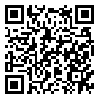BibTeX | RIS | EndNote | Medlars | ProCite | Reference Manager | RefWorks
Send citation to:
URL: http://jdisabilstud.org/article-1-1605-en.html

 , Hamid Alizadeh2
, Hamid Alizadeh2 
 , Esmaeil Sadipour2
, Esmaeil Sadipour2 
 , Soghra Ebrahimi Ghavam2
, Soghra Ebrahimi Ghavam2 
 , Nour Ali Farrokhi3
, Nour Ali Farrokhi3 

2- Faculty of Educational Psychology, Allameh Tabataba'i University
3- Assessment & Measurement Department Pyschology and Education, Allameh Tabataba'i University
Background & Objectives: Most students with learning disabilities usually receive unfair labels from teachers, family, and classmates, but sometimes this labeling is done by experts and specialists, which has more destructive effects. Certainly, labeling has consequences, but if this labeling results from over–recognition, it will have more irreparable damages. Therefore, it is essential to prevent overdiagnosis and, consequently labeling. The consequences of diagnostic errors ranges from adopting the wrong treatment and intervention strategies to the psychological damages caused by such diagnoses. Learning disabilities, especially in reading task, are called dyslexia or reading disorders. Thus, the formation of a diagnostic response to intervention (RTI) model in diagnosing learning disabilities that can distinguish the reading disorder from neurodevelopmental impairment and other types of reading challenges is vital. This study aims to prevent overdiagnosis of disorders. Learning and avoiding labeling were based on outward signs. We intended to study the effectiveness of the RTI–based training program to prevent the overdiagnosis of reading disorders.
Methods: The present study has a single–case AB design. The statistical population included the third–grade boy and girl students in District 3 of Karaj City, Iran in the academic year of 2015–16. Via purposive sampling method, among the 110 eligible students screened through a researcher–made checklist, 39 suspected cases of having difficulty reading were selected. After applying the inclusion criteria, 20 students (13 girls and 7 boys) were selected and entered the study. The inclusion criteria were receiving a permit to attend public education schools in the assessment upon entering elementary school and not receiving appropriate interventions for reading disorders before entering the program or during it. The exclusion criteria were the absence of more than three sessions from the intervention or simultaneous receiving of intervention from a private teacher or learning disorder therapist. In this research, these tools were used to collect data: A researcher–made checklist of reading skills, Diagnostic Reading Test (Shirazi & Nili Pour, 2004), Phonological Awareness Test (Soleimani & Dastjerdi Kazemi, 2005), Wechsler Intelligence Scale–Fourth Edition (WISC–IV) (Wechsler, 2003) and Unformal Reading Test (Aminabadi et al., 2017). The interventions were carried out based on the reading program of the RTI approach (Johnson et al., 2006). This program was implemented in three rows of 30–, 45– and 60–minute interventions for groups of 4 to 7, 2 to 4, and only 1 participant(s). Each row consisted of 9, 9, and 12 sessions, respectively. Three sessions were held every week for the participants in schools, and the sessions for last row were held in the clinic. Data were analyzed by a non–overlapping data ratio test at a significance level of 0.05.
Results: This study results showed that 55% of subjects achieved acceptable scores with the first row training intervention, 10% with the second row, 15% with the third row intervention, and 20% did not respond to the intervention. Therefore, effective results showed that the training program based on the RTI could reduce a group of students by diagnosing the reading disorder. Also, the program was effective in improving reading skills. The general pattern of program deletion was not repeated in the intervention rows. Finally, the program could detect reading disorders.
Conclusion: Based on the research findings, the training program based on the RTI model is effective, at least for a group of students with poor reading skills. Thus, it can be used to reduce students' poor reading skills and to prevent their overdiagnosis as students with reading disorders.
| Rights and permissions | |
 |
This work is licensed under a Creative Commons Attribution-NonCommercial 4.0 International License. |

